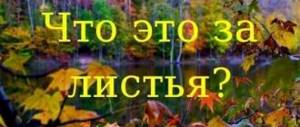Music lesson “Dancing, dancing, dancing...” 2nd grade
Music lesson in 2nd grade
Music teacher, MBOU Secondary School No. 3, Yaiva, Perm Territory
Volkova Irina Vladimirovna
Subject
: "Dancing, dancing, dancing..."
The purpose of the lesson
: introduction to the interesting and diverse world of dance.
Lesson Objectives
: get acquainted with the musical and rhythmic basis of the music of different peoples of the world; remember and show the plastic movements characteristic of each dance; emphasize dance rhythms by playing percussion instruments.
Forms of work
: listening to music, choral singing, playing instruments, moving to music.
Equipment:
music center, musical instruments (accordion, piano), noise instruments.
Contents and course of the lesson:
- Organizing time
Entering the classroom with dance music (“Polonaise”). The teacher asks the children to remember this music, it will be useful in the lesson.
Reflection: children choose the color of the note that corresponds to their mood at the beginning of the lesson (bright - came with a desire to go to lesson, dark - did not want to go).
- Formulation of the lesson topic by students
Children as a whole class greet each other, guests, and the teacher musically, by singing, while making theatrical movements and greeting gestures. Then the same thing is repeated, but without singing .
Teacher: You made movements without words, but to the music. What is one word for moving to music?
( Dance.)
- Updating knowledge on this topic
A board opens with the word “dance ” written on it. Teacher
:
What do you immediately imagine when you hear the word “dance”?
A cluster is drawn up on the board, and with the help of the children’s answers, the first impression of the word is recorded with some comments from the teacher.
Teacher: How much we know about dance. Is there something we don't know about him?
Children ask questions, the teacher briefly writes them down on the board.
If children find it difficult to formulate a question, the teacher helps. Teacher: What will we definitely be able and have time to learn more about dance in this lesson?
Can we name the dances? (Yes)
This will help….
the whole class. How is the name of the dance translated, what country is it from, can we? (Yes)
They will help us with this….
guys working with a dictionary. Can we find out the dance moves? (Yes)
The guys who... go to dance clubs will help us.
- Practical part
Learning to dance through movement.
Teacher
:
It's time to remember what dances you know?
Children remember the names of the dances; children working with the dictionary and the teacher give a brief historical background; remember the basic movements characteristic of dance; the whole class dances to the music (both recordings and live music can be used for accompaniment).
Then remind the children what kind of music they entered the classroom to: Polonaise - a Polish dance-procession of a ceremonial nature, which opened gala evenings and court balls, guests showed off their clothes and hairstyles, looked out for acquaintances... Children dance the polonaise in pairs. Draw a parallel with the Russian round dance (familiarity, transfer of energy through the palms). Sing in a circle r.n.p. “Bunny, come out!” (the teacher starts singing, the children pick up). The holidays in the villages ended with Russian dances (cheerful character). Dance "Lady".
Emphasizing dance rhythms using noise instruments.
The children take their seats. Using noise instruments from the exhibition (musical instruments made by the children’s hands), emphasize the dance rhythm and character of the music.
1. Waltz – 1st strong beat – forte, 2-3 weak beats – piano.
2. Foxtrot - rhythm (we play the first 3 beats in quarter notes, the fourth beat is a pause). The first half of the class starts, the second half continues (playing musical phrases).
3. Russian dance “Polyanka” - the whole class, listening carefully to the music and looking at the conductor, correctly plays the dynamics (forte piano) and tempo of the music.
St. John's wort
Remember how many years ago the first dances appeared: primitive people sat around a fire, making sounds (this is how songs appeared), making movements (this is how dancing appeared), beating out the rhythm with their hands or other objects (this is how musical instruments began to appear). Very often people imitated the movements of animals.
Those children who go in for dancing or sports, or whose parents go to aerobics (sports movements to music), raise their hands. Modern children imitate animal movements to modern music. We dance “Zverobika”.
- Summing up the lesson
Teacher: What did we learn about dancing in this lesson? (
There are many of them in the world, they are beautiful and diverse...).
Return to the board. Teacher: Have you completed everything planned?
Children draw conclusions.
VI . Homework.
Introduce your relatives or friends to any movement from any dance that you liked the most.
VII . Reflection
Children choose the color of the note that matches their mood at the end of the lesson. (Reflection can also be carried out during the lesson, if you need a quick and short response from the whole class, as an assessment of your own activity or the whole class).
Children sing "Goodbye".
They leave the class to the music that they liked most during the lesson.
Literature.
Kritskaya E.D., Sergeeva G.P., Shmagina T.S.
Textbook "Music 2nd grade". Education, 2012 Recent documents: Summary of a lesson in Music “WHERE THE MARCH LEAD US” 1st grade
Street dance
Locking
Locking , originally called Campbellocking, thanks to its founder. The quick movements and instantaneous freezing for a short time in various poses characteristic of locking gave the style its name (“lock”). Locking is characterized by clear and very rhythmic movements of the arms and smoother hips and legs, always tied to the music.
Another feature of locking is its focus on the public. That is, the dance is more of a performance: the dancer is always friendly and smiles at the audience. Their costumes are exclusively bright sportswear with “stripes” and sometimes suspenders.
Since birth, locking has been performed to funk music. Modern dancers also prefer to dance to funk.
Papping
Papping is far from new in the list of modern dances. Its origins were in the 1970s in California, thanks to locking. In Russia, the style was also present for quite a long time and was widespread. Moreover, even large-scale competitions took place, but in Russia they called it “top break,” mixing top break with papping. Now you already understand what we are talking about, and you can imagine the movements that are characteristic of papping. Visually, this looks like a chaotic and continuous contraction of muscles, creating the effect of shuddering parts of the body, in combination with various postures and other movements that form either smooth or sudden movements of the body.
Nowadays, top breaking and popping are differentiated and are different styles.
Dancehall
Dancehall or dancehall is a Jamaican form of modern dance. In the 80s, it originated as "raggamuffin", a musical style that arose from the "riddim" (reggae rhythm), but was more rhythmic.
Dancehall groups dancers of this style into camps. The camp is a large-scale event that includes competitions, master classes, parties, show programs, battles and many other entertainments inherent in this movement. The largest such camp is Big Up Kemp. Unusually for our country, the first camp was held in Russia and France in 2011 and is now one of the most significant dance events in the world.
Twerk
Twerking, abbreviated as twerk, also known as booty dancing, is nothing more than shaking or dancing with your butt. This is not sarcasm, but a direct description of this modern and currently popular style of dance, the origins of which were the tribal dances of women from the African continent. The whole essence of twerking lies in the intense movements of the hips, buttocks, a little of the arms and abdomen. Surprisingly, this dance is performed even by men. Twerk has become a kind of offshoot of today's modern dancehall. Also contains sexual overtones.
Bootie dance is performed to hip-hop, reggae music, R'n'B and samba. The peculiarity of professional performance is the ability to move one buttock independently of the other and perform various complex patterns with the buttocks.
Often in the West, twerking is performed by dancers with cellulite, despite the fact that such active movements of the buttocks contribute to the acquisition of athletic shape. Maybe this is the reason...?
It has not been proven, but it is believed that regular twerking, both professionally and at home, prevents congestion in gynecology. People who are not liberated will not be able to twerk, although twerking helps to get rid of this complex.
In some fitness centers, twerking classes are taught by fitness instructors, as they perceive these dances as an additional direction in their training.
Sometimes modern dances of reality can surprise, and sometimes even confuse an “unprepared person”...
Electro dance (tectonic)
Electro-dance (tectonic) - the name came to us from distant France, or rather from the famous club “Metropolis”, where the annual Tecktonik Killer party is held. In general, this is a cross between hip-hop styles and techno dances. The dance itself is performed to the sounds of heavy electro music.
Brakedance
Breakdancing is the founder of hip-hop as a subculture. It is divided into two types: upper (plastic) and lower break (heavy stunt movements that require acrobatics skills and good endurance). Breakdancing originated in New York in the 60s. However, the year of its origin is considered to be 1973, the year of the formation of breakdancing as a separate independent dance.
Vogue dance
Vogue dance is based on the movements inherent in the models: from pose to catwalk gait. Vogue clearly stands out from any other style of modern dance with its pronounced and fast hand movements, falls, posing and emotional performance to house music.
Vogue appeared in the 1970s, thanks to the Harlem prisoners. For fun, the convicts joked about the poses of models seen in magazines and imitated them, ridiculing them. Soon these poses began to be diluted with other movements, then they began to show themselves to music, and subsequently all these actions were transformed into a fashionable vogue dance.
Vogue was quickly embraced by the sexually liberated New York population. People who were distant from high fashion due to their social status were organized their own vogue balls, where they could feel like a star, appearing on impromptu catwalks.
A strong impetus to the development of voguing was given by Madonna's Vogue video of the same name in 1990. Then this foreign dance left its native lands and was brought to Europe. Nowadays, Vogue is considered an integral part of house culture.
Strip of plastic
Strip plastic is a complex of seductive movements that create a kind of performance with an erotic, sensual overtones, understandable to everyone who views this work of art. Strip plastic is a kind of language of self-expression of one’s inner feelings and beauty.
Finger Tutting (finger dancing)
And finally we left the youngest and most rapidly developing dance style, Tutting . It is based on complex figures made with the fingers, stylizing ancient Egyptian art, and relating to “King Tutu”.
The style began to emerge in 2010 after the release of the film “Step Up 3D”, where Jay Gutierrez performed his “finger number” in the credits at the end of the film.
Variety dance
The simplest of all types of modern dances in terms of restrictions on elements and sequence of actions. Absolutely stage, improvisational and freely choreographed dance. May include other contemporary dance styles. Its characteristic is a miniature, a small dance scene.
Pop dance took its formation from gypsies and folk choirs. It is mandatory for dancers to know the basics of acting or quickly learn them from their teachers.
Pop dance is very fashionable. Classes are held in almost every choreographic school in any city in the world. Do you understand the scale of popularity?





